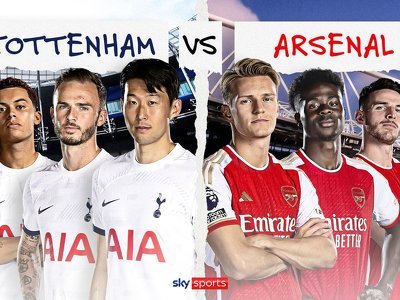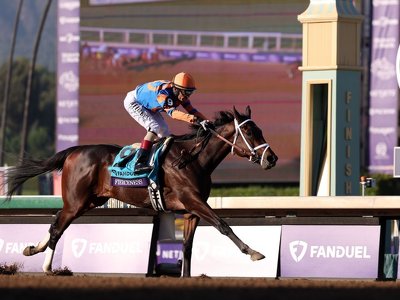Aston Martin’s Carlos Sainz Jr. protest at F1 Chinese Grand Prix, explained

It would not be a Formula 1 grand prix weekend without a little bit of controversy.
This weekend’s Chinese Grand Prix is certainly living up to that rule.
The first spicy bit of business came at the end of qualifying for the Sprint Race, when Lando Norris saw a lap time deleted for exceeding track limits, but subsequently reinstated. That decision allowed Norris to capture pole position, and led to some questions as to what exactly happened.
Saturday’s qualifying session for the Grand Prix itself saw another bit of controversy, a protest from a team, and a lengthy decision handed down by race officials.
The matter in question began in Q2 during qualifying, when Ferrari driver Carlos Sainz Jr. veered into the gravel coming out of the final turn on a push lap. When the right-side tires of his SF-24 hit the gravel, Sainz spun across the circuit and into the barriers on the opposite side of the track. You can see the incident here from aboard Sainz’s SF-24:
Carlos Sainz looked all but out of qualifying after hitting the barriers...But he and the Ferrari mechanics had other ideas Aston Martin have lodged a complaint with the stewards since the incident as Carlos got going again after a Red Flag#F1 #ChineseGP pic.twitter.com/SV5yh9Nb3A— Formula 1 (@F1)
The incident brought out a red flag, as the front wing on Sainz’s car was knocked clear off. After a delay on the track, Sainz was able to get his car back to the garage, and the team began working furiously to repair the damage.
When the session resumed, Sainz was able to return to the track. He then advanced out of Q2 and into Q3, ultimately qualifying seventh.
However, Aston Martin took issue with that sequence of events.
The team lodged a protest with race officials, citing Article 39.6 of the Sporting Regulations. That section reads as follows: “Any driver whose car stops on the track during the qualifying session or the sprint qualifying session will not be permitted to take any further part in that session.”
Specifically, Aston Martin had this to say about the incident when lodging their protest with race officials:
Aston Martin Aramco F1 Team, by means of this document, formally files a protest against car number 55 driven by Carlos Sainz of the Scuderia Ferrari Team whilst competing in the 2024 Formula 1 Lenovo Chinese Grand Prix at the Shanghai International Circuit on the 20th Day of April 2024.
Aston Martin Aramco F1 Team claims that the above car is in breach of Article 39.6 of the 2024 Formula One Sporting Regulations due to the fact that Car number 55 clearly stopped on track causing a red flag which in turn caused the qualifying session to be stopped.
Race officials summoned Ferrari to a post-qualifying hearing, which was held with the concerned parties present as well as other teams who requested to be present at the hearing.
According to the decision released by race officials, the hearing turned on the meaning of the word “stops” in Article 39.6. At the outset, officials noted the following undisputed facts:
Race officials then noted that while Article 39.6 suggests that any car that “stops” should not be permitted to continue, it was clear from examples cited “by a number of the team managers present and the FIA that this was not how the rule was applied by the teams and the FIA in the past.”
Representatives from the FIA “explained that so long as the car was able to restart and continue from a stopped position within a reasonable time, that would ordinarily be permitted.” (Emphasis added)
Furthermore, stewards noted that the typical “reasonable time” would be around 30 seconds, though that amount of time “varied depending on the circumstances.” In addition, there remained some uncertainity regarding what was truly a “reasonable time.” As noted in the decision, “[t]he teams themselves said that they had previously attempted to agree what they considered to be a reasonable length of time before a car would be considered ‘stopped.’ Unfortunately, they were not able to come to a final agreement on the maximum time allowed.”
In the view of FIA officials, what was critical was that Sainz did not “receive any outside assistance in order to restart [such as from race officials or marshalls].” This, as outlined above, did not occur.
However, while Aston Martin conceded that prior examples of cars stopping on the track and being allowed to continue existed, Sainz stopping for over one minute — 77 seconds to be exact — was “too long.”
Thus, race officials were left to determine if stopping for 77 seconds, a question of “duration” as they described, was too long. Ultimately, race officials believed this was a matter of discretion for Race Control.
“Absent clear guidance in the regulations or an agreed, established practice of when too long was too long, we considered that this was a discretion best left to Race Control.”
Furthermore, the stewards found that past practice focused more on the matter of potential outside assistance, rather than duration.
“There was therefore a clear pattern of past practice in the sport whereby this rule was read to allow a car to restart and continue, as long as it did not receive outside assistance to do so.” A 2022 incident at the Canadian Grand Prix involving Alexander Albon was cited, where Albon stopped for “40-odd seconds and restarted without complaint from any teams.” As noted in the decision, Race Control at that event reported that Albon had indeed “stopped,” but that notation was not enough to find a violation of Article 39.6.
In conclusion, the race officials held that “ ... taking into account the numerous examples where cars had stopped for different lengths of time and were permitted to restart and continue to participate in the session concerned, we considered that the decision taken by Race Control was not inconsistent with past practice nor in breach of Article 39.6.
“We considered that even if the plain wording of Article 39.6 warranted a more stark conclusion, the consistent practice in the sport to date did not warrant a setting aside of the discretion exercised by Race Control by us as Stewards.”
Of course, this all begs the question of whether there is a push to further clarify this language in future editions of the Sporting Regulations.
For now, however, Aston Martin’s protest has been dismissed, and Sainz will start the Chinese Grand Prix in P7.
- Last
News by day
3 of May 2024







